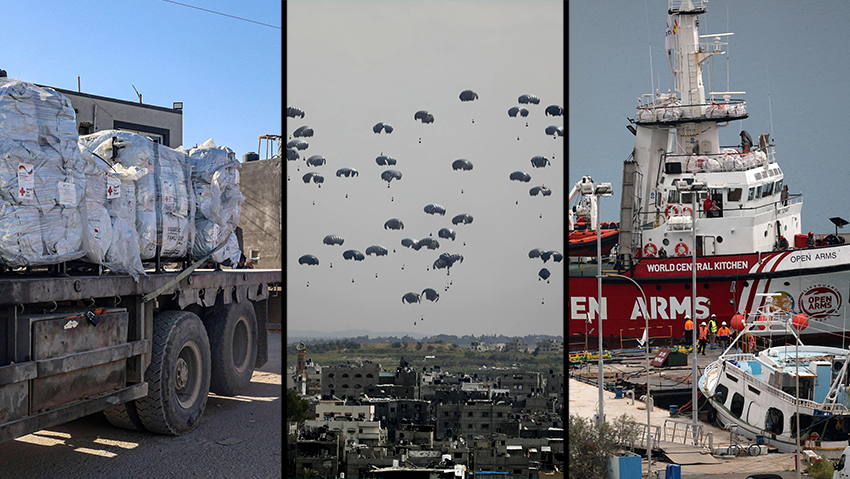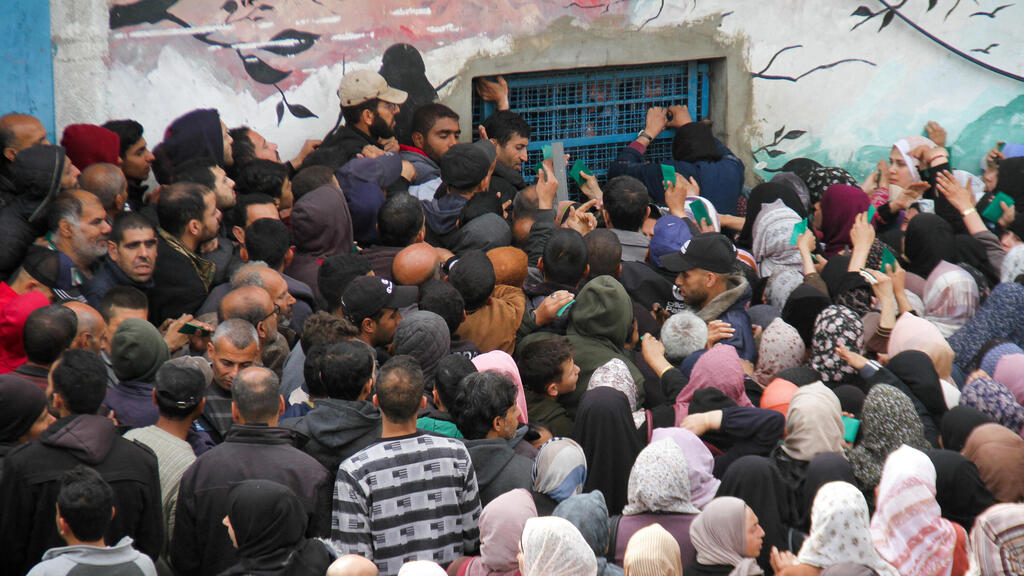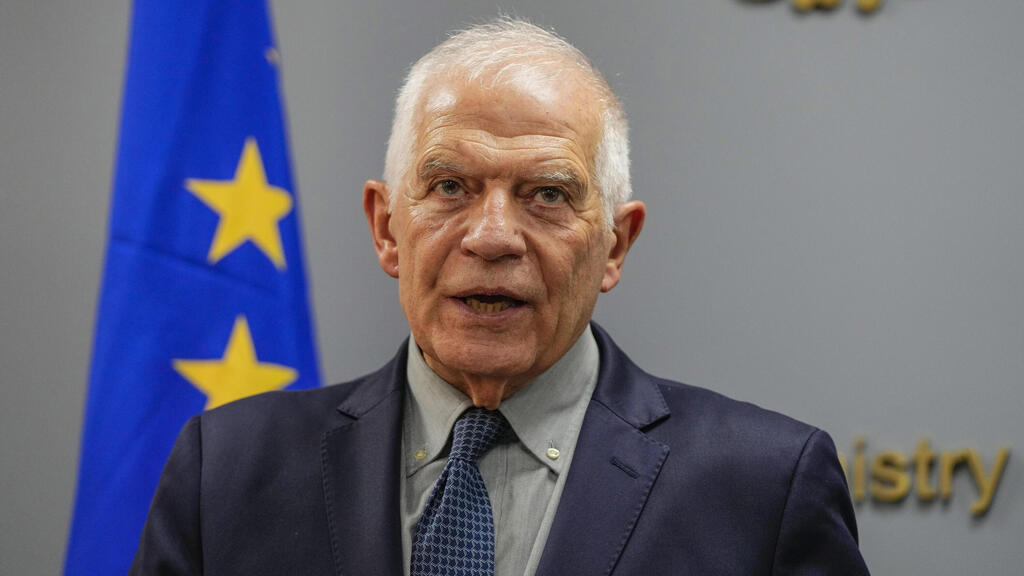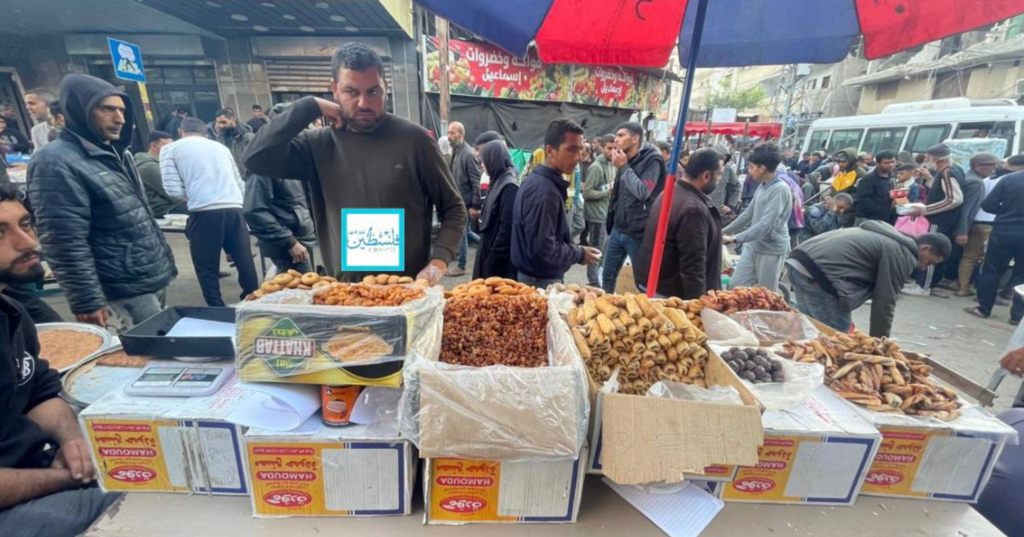Getting your Trinity Audio player ready...
Israel unequivocally determined that Gaza was not suffering a humanitarian crisis. According to officials, since the beginning of the war, Israel has allowed the entry of over 17,400 aid trucks to the Gaza Strip, including over 10,300 trucks carrying more than 218,000 tons of food.
More stories:
For context, the daily average number of trucks carrying food to the Gaza Strip before the war was around 70, and since the beginning of March, the average has grown to over 125 — marking an 80% rise. However, a large portion of the aid is looted, mainly due to the Gazan crowds swarming the trucks.
4 View gallery


Humanitarian aid being delivered to Gaza
(Photo: SAID KHATIB / AFP, REUTERS/Yiannis Kourtoglou, AP Photo/Mohammed Hajjar)
Since the start of the Gaza war, Israel’s Coordinator of Government Activities in the Territories (COGAT) said it monitors the civilian situation in the Strip, and carries out humanitarian efforts for non-combatants as complementary measures to the IDF’s operational efforts in the area adding that this endeavor provides Israel with international legitimacy that directly influences ongoing operations.
COGAT’s responsibility includes close collaboration and coordination with international organizations and key countries such as the U.S. and Egypt. Officials there said they hold daily meetings with various authorities to monitor the humanitarian situation in the region.
No famine in Rafah
(Abu Ali Express)
Israel currently allows the entry of humanitarian aid via land, air, and sea under international law. It doesn’t impose restrictions on the quantity of aid that can enter the Strip, but encourages countries and organizations to send additional assistance and works with its partners to facilitate new humanitarian initiatives in the area.
Israel was being accused around the world of directly causing hunger in the Gaza Strip and is considered responsible for Palestinians lacking food. The EU's High Representative for Foreign Affairs and Security Policy, Josep Borrell, echoed these claims on Monday, saying Israel intentionally causes hunger in Gaza and uses starvation as a war tactic.
How aid is distributed is an issue Israel is currently trying to solve — mainly via complaints with the UN, which has failed to increase its manpower nor secure its aid convoys as customary in other crisis zones.
According to COGAT, there were days in which 300 trucks carrying food and humanitarian aid awaited on the Gazan side of the Kerem Shalom crossing after having gone through Israeli inspection — yet no one took them in.
The UN, Israel claims, isn’t functioning, perhaps out of a desire to preserve the narrative according to which Israel is starving the Gazan population. Another allegation claims insulin shots for diabetic patients aren’t allowed to enter the Strip — with Israel denying these claims.
Meanwhile, in collaboration with the U.S. and other allies, Israel has recently facilitated additional humanitarian initiatives to ease access to aid to the northern Gaza Strip. These initiatives include the opening of the 96th Crossing in northern Gaza alongside dozens of airdrops providing tens of thousands of food parcels and the establishment of a temporary port from which the first shipment carrying 115 tons of food was already complete.
According to reports on Thursday, a covert plan within Israel’s security establishment was aimed at recruiting Palestinian leaders, unaffiliated with Hamas, to be responsible for aid distribution in the Strip — and eventually to take control of the area instead of the terror group.
These actions were taken in addition to a significant increase in security inspection capabilities at the Nitzana and Kerem Shalom border crossings, making it easier for wheat shipments to go through the Ashdod port, alongside other humanitarian initiatives.
Israel said it has bolstered personnel, extended working hours, and acquired additional scanners to increase throughput at the border crossings, enabling it to now inspect a combined number of 44 aid trucks per hour at both crossings.
In terms of aerial assistance, Israel said it has worked with the U.S., Egypt, Jordan, as well as other countries, to facilitate over 40 airdrops of aid to various parts of the Gaza Strip, including the northern sector.
These airdrops, along with the new crossing, are ways to get aid to wherever it’s needed while bypassing the bottleneck created by international organizations tasked with aid distribution in Gaza.
4 View gallery


Palestinians crowding next to UN aid distribution center
(Photo: REUTERS/Mahmoud Issa)
While Israel has insists it has made extensive efforts to improve its monitoring capabilities, international organizations responsible for aid distribution in the Strip still do not operate adequately. Israel inspects aid deliveries much faster than the ability of international organizations to distribute it.
Israeli officials noted that chronic hunger isn’t an issue in Gaza, and added that food stockpiles are present in Gaza’s south. They added that localized areas experiencing hunger in the north do exist, but said the blame lies with the UN for being unable to bring in and distribute it. An Israeli source said the UN organization there has stopped functioning.








